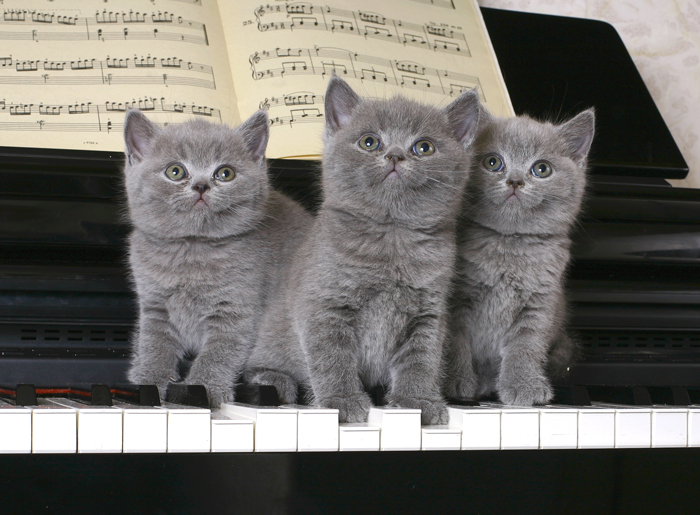Fun, engaging activity is vital for your feline’s wellbeing.
Cats are predators by nature. You can’t take hunters out of their natural environment and expect them to do well in one where potential prey is nonexistent. Cats have spent millennia finely tuning their hunting instincts and if you don’t replace their primal need to pursue, you’ll become their prey and/or they will act out in destructive ways to communicate their needs.
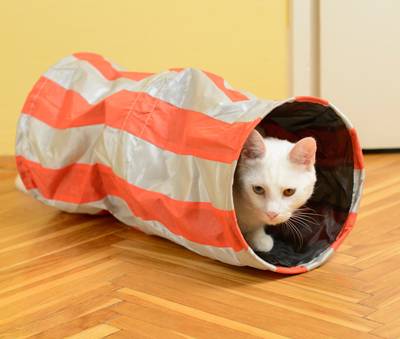
Photo credit: Wild_Strawberries/iStock
“Your cat is like a Ferrari,” said Pam Johnson-Bennett, a cat behaviorist. “You can’t just leave it in the garage to rust away. You need to get your cat playing to see how great she really is.”
Providing myriad opportunities for play is the best way to satisfy cats’ hunting instinct. However, there are ways to play that will make it a lot more fun for you and your cat. While you might think play involves nothing more than dangling a toy in front of your cat, most likely, you are just making her more frustrated.
Play is primarily about hunting to a cat and that means it can be broken down into four main components: stalk, chase, pounce and eat.
“Cats need to have their natural hunting instincts stimulated in a healthy indoor environment,” said Ellen Tsuyaki, founder of Neko Flies Cat Toys. “Using wand toys allows cats to use their various skills of hunting, such as stalking, jumping and running, while chasing prey. It also helps keep your cat fit and minimizes obesity issues, which are a problem in many indoor cats.”
Choosing a Toy for Your Cat
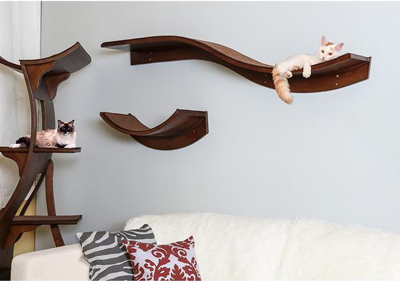
Photo courtesy of The Refined Feline.
How you choose to play with your cat depends on her personality. No matter what your cat’s favorite method of play is, be sure you provide her with a variety of items that will stimulate all of her instincts, including:
- Hiding: cardboard boxes, tunnels, cat caves, etc.
As with many cats, yours might need to have several places to hide in, particularly if household activity becomes overwhelming. Provide her with a cat play tunnel she can crawl and hide in or set out a few different sized boxes for her to explore. (I’ve never seen any cat turn down a good cardboard box.)
- Climbing: cat trees, cat perches, tall scratching posts, etc.
In the wild, cats seek out high places to observe unobtrusively and safely. Climbing is important for your cat because it not only satisfies this natural urge; it also enables her to use and sharpen her claws. As such, your cat should have scratching posts and tall items to climb and explore. Be sure you invest in a sturdy tree/scratching post or your cat could become injured if falls over on her.
- Stalking and Chasing: Wand toys, lasers, stuffed toys, ball track toys, electronic prey toys, etc.
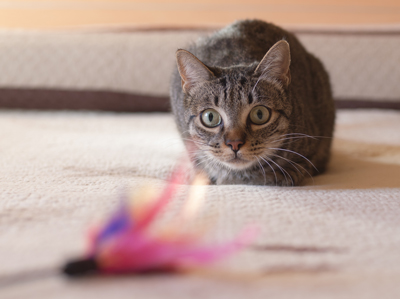
Photo credit: Ramonespelt/iStock
Because your cat is a master hunter, she will need a way to stalk “prey.” This can be done by drawing a wand toy across the floor in front of her or by playing a game of hide and seek. Cats also love to chase things, so you’ll need to identify what types of things your cat prefers to chase. Sometimes a cat will be scared of a mouse or bird and prefer to chase a bug or a lizard. You shouldn’t encourage your cats to go after live prey because that’s just cruel; however, you should select a toy that mimics the action and size of what she likes to chase most.
- Pouncing: wands toys, stuffed toys, electronic prey toys, etc.
The pouncing part of catching prey is very important to cats because it gives them the opportunity to “complete” a mimicked kill. Always remember to let your cat eventually catch whatever it is you’re encouraging her to chase. If you don’t, your cat could become frustrated and refuse to play.
- Eating: treat dispensing toys, cat food, cat treats
You should provide your cat a snack or meal after a solid play session. This helps complete the cycle of hunt, catch, kill, eat. Cats like to earn their dinners so be sure you keep her active prior to feeding. You won’t find many freeloaders in the feline world.
When To Schedule Playtime
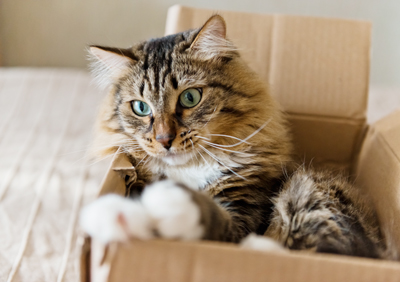
Photo credit: Valeriya/iStock
Cats are crepuscular (most active at dusk and dawn), which often makes those hours the best time to play. This is when your cat will most likely want to engage in play. Remember, though, all cats are different. You should pay attention to when your cat is most active and set your playtime for those hours—unless, of course, that time is two in the morning.
While the types of activities you engage your cat in are important, what ultimately matters is the actual engagement. Cats, particularly indoor ones, need their owners encouragement to stay active; not doing so can jeopardize your cat’s mental and physical well-being. Whatever activity you choose for your playtime, be sure your cat is enjoying as much as you are.
About the Author: Stacy Mantle is a fulltime freelance writer, bestselling author and founder of PetsWeekly.com. She resides in the deserts of the Southwest with a few dogs, several cats and a very understanding husband.




